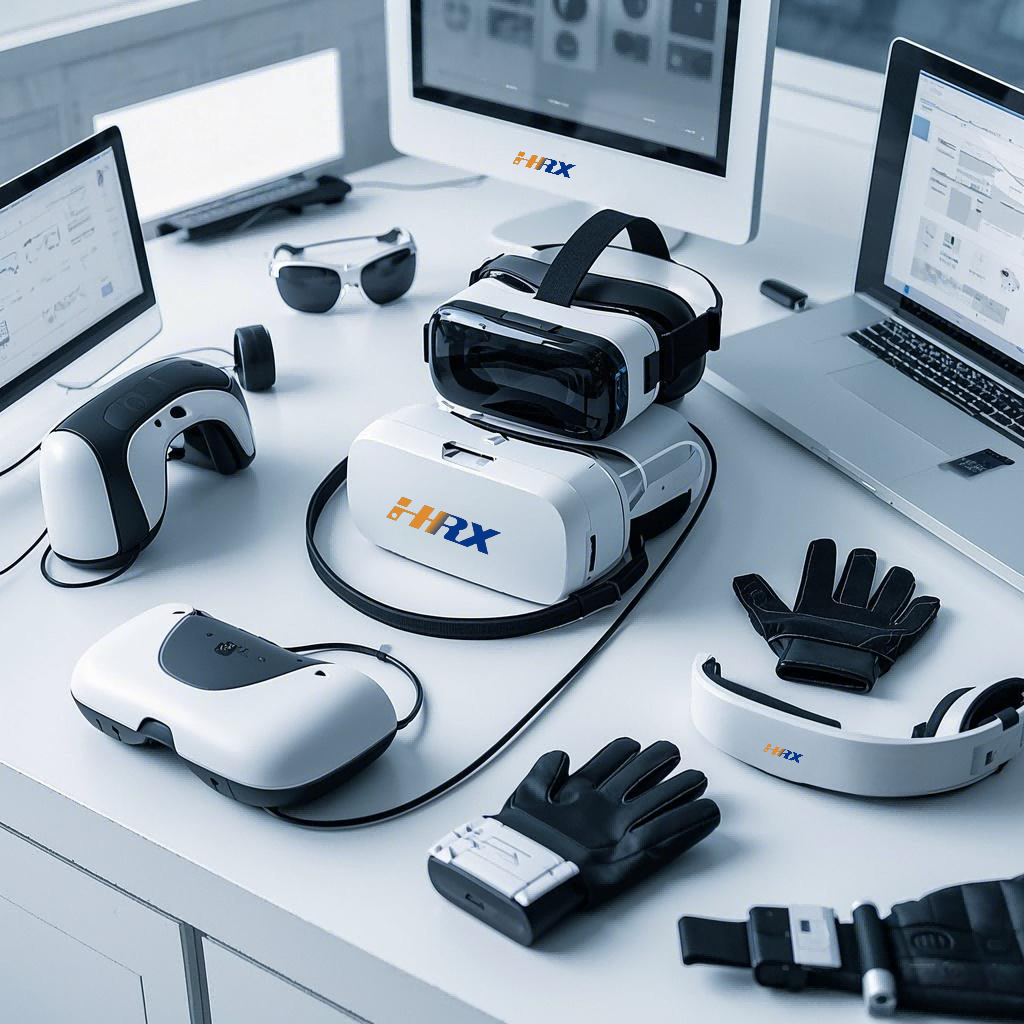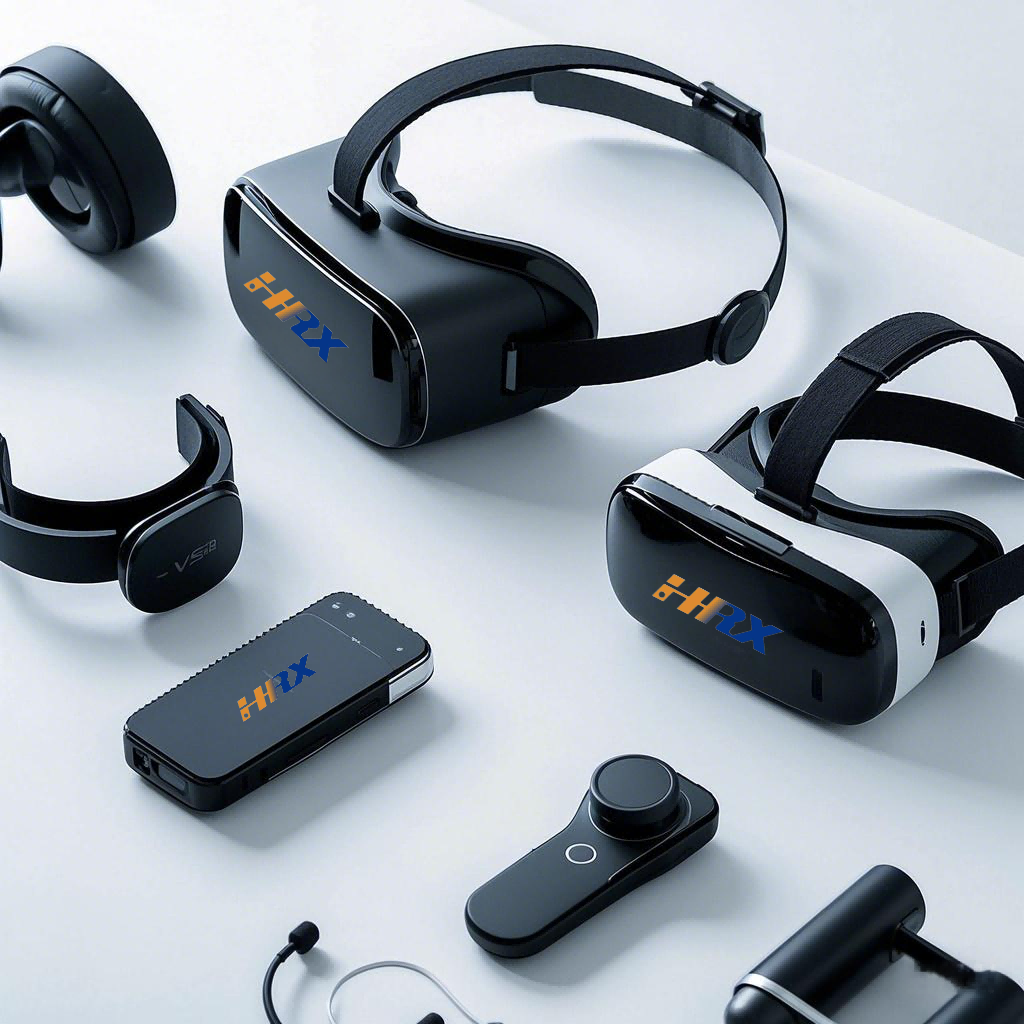Search
FPC Technology: Paving the Way for Next-Gen XR Headset Devices
- Jan 04,2025
-
Share
In the captivating realm of Extended Reality (XR), which seamlessly combines Virtual Reality (VR) and Augmented Reality (AR), Flexible Printed Circuit (FPC) technology has emerged as a linchpin for progress. XR head-mounted display (HMD) devices are redefining immersive experiences, and FPCs are the driving force behind their enhanced functionality and user satisfaction.

Space Optimization: FPC's Ingenious Adaptability
XR headsets demand a compact and ergonomic design to ensure comfortable usage over extended periods. This requires fitting a plethora of electronic components within a confined space. FPCs offer a game-changing solution. Leveraging their flexibility, they can be artfully routed and contorted to nestle into the most intricate cavities of the headset. Consider the region around the headset's pivot point, where the display unit swivels. Traditional rigid printed circuit boards would not only consume precious space but also impede the device's smooth movement. FPCs, on the other hand, can be custom-designed with serpentine traces, allowing them to follow the curved contours. They are fabricated using advanced polyimide substrates, renowned for their excellent heat resistance and flexibility. This enables a seamless connection between the high-resolution micro-OLED display, with its pixel densities that can rival the human eye's acuity, and the central processing unit housing powerful graphics processing units (GPUs) and application-specific integrated circuits (ASICs). By minimizing the physical footprint and reducing the need for bulky connectors, FPCs contribute to a sleeker, more lightweight headset design.
Signal Integrity: Fortifying the XR Experience
An uninterrupted and immersive XR adventure hinges on the flawless transmission of copious amounts of data. From the streaming of high-definition video feeds to the instantaneous feedback from inertial measurement units (IMUs) and haptic sensors, reliable signal paths are non-negotiable. FPCs are meticulously engineered to safeguard signal integrity. Employing differential signaling pairs, where two conductors carry complementary signals, they effectively mitigate crosstalk and electromagnetic interference (EMI). This ensures that the signals, whether they're triggering a real-time environmental response in an AR application or animating a complex 3D avatar in VR, reach their destination with pristine clarity. Additionally, FPCs incorporate state-of-the-art shielding techniques. Metallized films, often made of copper or aluminum alloys, are laminated onto the FPC surface, acting as a barricade against external EMI sources. Ferrite beads and capacitors are strategically placed along the signal paths to further suppress any residual noise. This comprehensive shielding approach guarantees that the delicate signals, traveling at multi-gigabit speeds, remain uncorrupted, providing users with a seamless and responsive XR encounter.
High-Density Interconnectivity: Unleashing Advanced Capabilities
The evolution of XR headsets has led to an explosion of features and functionalities. Eye-tracking technology for enhanced interaction, high-fidelity spatial audio systems, and advanced gesture recognition all demand intricate interconnectivity. FPCs rise to this challenge with their ultra-fine copper traces, often with line widths and spacings measured in micrometers. These micro-vias and ultra-precise etching techniques enable a staggering density of connections. In the vicinity of the display driver IC, where the conversion of digital signals to the precise voltages required for each display pixel occurs, FPCs can handle the complex wiring maze. They can interface with dozens of pins in a minuscule area, facilitating the synchronized operation of the display and ensuring pixel-perfect accuracy. This high-density interconnectivity unlocks the potential for XR headsets to offer hyper-realistic simulations, be it for flight training, architectural walkthroughs, or immersive gaming experiences.
Thermal Management: Sustaining Peak Performance
With the escalating computational demands of XR applications, heat dissipation has become a critical hurdle. FPCs play a pivotal role in maintaining thermal equilibrium. Some FPC designs integrate thermally conductive layers, often composed of graphite or copper composites. These layers act as heat spreaders, efficiently transferring heat away from hotspots. For instance, near the ASIC responsible for real-time rendering, where temperatures can skyrocket during intense usage, the FPC's thermal vias and conductive layers work in tandem. They channel the heat to the outer surface of the headset or to dedicated heat sinks, preventing overheating-induced performance throttling. This not only preserves the longevity of the components but also ensures consistent frame rates and responsiveness, enhancing the overall XR experience.
Future Trajectories: Pioneering the Evolving XR Frontier
As XR technology hurtles forward, the bar for FPC innovation will be set even higher. We foresee the advent of even more flexible and thinner FPCs, perhaps leveraging emerging materials like graphene-infused polymers that offer enhanced electrical conductivity and mechanical strength. Manufacturing processes will embrace artificial intelligence-driven optimization, ensuring micron-level precision and defect-free production. In terms of applications, as XR permeates industries like telemedicine, automotive design prototyping, and remote collaborative workspaces, FPCs will need to be tailored to meet domain-specific requirements. For example, in medical XR devices used for surgical navigation, FPCs must adhere to strict sterilization and reliability standards, with materials and coatings that can withstand repeated chemical disinfection.

Here at Shenzhen Huaruixin Electronics Co., Ltd., we are at the vanguard of this technological revolution. As a professional company dedicated to the design, production, and sales of top-tier FPCs, we bring together a team of seasoned engineers and technicians. Our state-of-the-art facilities and rigorous quality control processes ensure that every FPC we produce meets the exacting demands of the XR industry. We pride ourselves on our ability to collaborate with clients, understanding their unique needs and translating them into innovative FPC solutions. Whether you're a leading XR headset manufacturer looking to enhance your product's performance or an entrepreneur venturing into the XR space, we welcome you to engage with us. Let's join forces to push the boundaries of what's possible in XR technology, with FPCs as our foundation for success.

Let’s talk! We’ll provide the perfect solution for you!
-
 Huaruixin Electronics mainly produces printed circuit boards as the core business, to provide customers with one-stop solutions for FPC/PCB production, components sourcing and Assembly.
Huaruixin Electronics mainly produces printed circuit boards as the core business, to provide customers with one-stop solutions for FPC/PCB production, components sourcing and Assembly. - WHAT WE DO — PCB Design Solutions — Flex PCB Production — Components Sourcing — FPC&PCB Assembly
- PRODUCTS — Single Sided Flexible Circuits — Double Sided Flexible Circuits — Multilayer Flexible Cirucits — Rigid-Flex Circuits — FPC Assembly — PCB Assembly
- CAPABILITY — FPC Capability — Rigid-Flex Capability — PCB Capability — Assembly Capability
- Copyright © 2024 Shenzhen Huaruixin Electronics Co., Ltd. All Rights Reserved.
- Design By BONTOP


